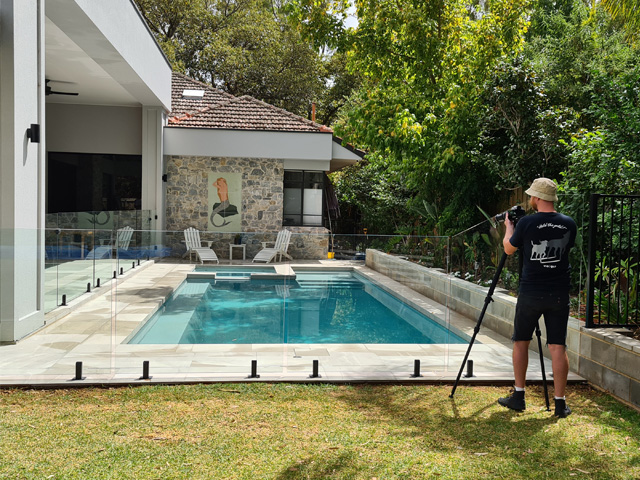THE RIGHT POOL COVER IS ALL IN THE PLANNING
15 Jun 2023
Most people think of a pool cover as an afterthought when the pool project has been completed or is nearing completion. If this happens, they will most likely end up with an aboveground pool roller. There is nothing wrong with this, but it will limit their options.

There are many types of pool covers available including fully automatic systems, semi-automatic systems, standard above ground rollers, aluminium, and timber bench seat rollers. The final choice will depend on when the pool cover choice is made and, of course, the budget.
Deciding on an in-ground pool cover after the landscaping has been completed is definitely possible, and has been done many times, but a retrofit installation generally incurs additional costs in removing or changing the existing area.
It is always best to include all components of a pool in the original design, as this will highlight design issues that can be addressed in the planning stage, but sadly many pool owners and designers neglect the pool cover in this process. Small things such as which end of the pool the pool cover will be positioned can also uncover issues that can easily be overcome during planning. Designing your pool cover at the same time as the pool will also highlight any pool shape issues that have not been thought of.
The National Construction Code has been in effect for some years now and lists specific requirements for heated pools. This means all pools being installed or in design need to consider whether or not a pool cover will be required. Ignoring this could result in compliance problems, which are to be avoided.
Problems and Solutions
In 90 percent of cases the team at Aussie UnderCover®, in conjunction with its pool cover suppliers, can find a solution for unusual and tricky pools. Let’s look at some of the common problems that occur, and the solutions achieved when seeking to implement an easy to use and accessible hidden pool cover.
Spas and Pool Covers

Having the pool cover at the same end as a spa area is possible but can cause ease-of-use issues. Below the pool area on the left has an 11-metre infinity edge requiring a wind skirt to hold it in place. The client wanted the pool cover at the spa end, therefore the pool and spa covers are separate, so the spa can be used without removing the pool cover. The spa section is placed on top of the main pool when rolling away with the semi remote-controlled system. Completed pool photo below, showing a discreet and functional Aussie UnderCover system. 
To the right we see a pool with the Aussie UnderCover at the opposite end to the spa, also with a separate spa cover as the spa is surrounded by copers. If the spa was just above the waterline but below the copers, the pool cover could be in one piece.
Folds and Angles in Pool Covers

Above, we see a pool cover where a folded section was avoided by using a 6.94-metre custom kit rather than a 4.5-metre medium kit with a folded cover. Rolling a pool cover flat is always the best option, but in some cases, this is just not possible.
The second example on the right shows a triangle entry step which is difficult to roll flat. The solution was to fold this section of the pool cover before rolling the cover away. The pool is 12.5-metre long therefore a semi remote-controlled motorized system was recommended. Below shows the finished pool with the triangle folded step. 
The third example shows a large 4.8-metre Aussie UnderCover system with a folded cover section 4-metre x 1.25-metre as this was the best option. The folded section could also have been separated and placed on top of the main pool cover when rolling away, but the customer preferred a single cover rather than two.
Contact the Aussie UnderCover team to find out more about its pool cover systems via the links below.







